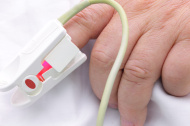What is a Medical Oxygen Sensor?

An oxygen sensor is a sophisticated electronic device which is intended for measuring the proportion of oxygen in liquid or gas, depending on what substance is being subjected for analysis. It was developed in the 1960s by a man named Robert Bosch GmbH with the help and guidance of Dr Gunter Bauman. The very first sensing element that was used at the time of its development was a small shaped zirconia ceramic, which by the way was coated on both the exhaust and reference sides with a thin layer of platinum and also coming in both heated and unheated forms. Since the discovery and invention of a new planar style sensor in 1998, ceramic sensing elements were later changed to the new one, allowing sensors to be more accurate and fast, which then led to the rise of more applications and uses for the device.
The Uses in Medical and Science Industries
For medical professionals and scientists, the main purpose of oxygen sensors is to measure oxygen production or respiration. Read more about it at http://en.wikipedia.org/wiki/Oxygen_sensor. The sensors are to be used in oxygen analyzers, which in turn are intended for different medical applications like that of anesthesia monitors, oxygen concentrators, and respirators.
As for the method of oxygen measurement, there are several technologies that can be utilized, including zirconia, electrochemical, ultrasonic, infrared, and laser. Obviously, each method comes with its own advantages and disadvantages.
Medical Oxygen Sensors
The best medical spo2 sensors come with the highest level of precision for all sorts of applications. The applications can be life support systems found in intensive care and emergency medicine, outpatient care, and practically everything that requires sensors. There are several manufacturers of these medical oxygen sensors that are somewhat considered as competent partners in the respiratory gas sensors application.
Meanwhile, there are various medical-related instruments that will be utilizing breathing gas technologies in the likes of incubators, anesthesia and respiratory therapy, gas supply, lung function analysis, and even in the area of sports medicine. There are numerous companies that develop customized OEM sensors as well as modules that are specifically designed for technological specifications.
Technology Used in Sensors
Medical oxygen sensors have come a long way in terms of technology integration. In fact, there are companies out there already developing and producing fuel cell oxygen sensors. Just like traditional oxygen sensors, these news ones at http://sensoronics.com are designed to be used in the medical field and in applications like ventilators, anesthetic machines, oxygen analyzers, and monitors. The new sensor is designed to be able to detect oxygen concentration in gas mixtures. The detection is based on a certain chemical reaction with an electrolyte that's found inside the sensor. The best way increase the shelf life of these sensors is to store them in a cool area like a refrigerator.